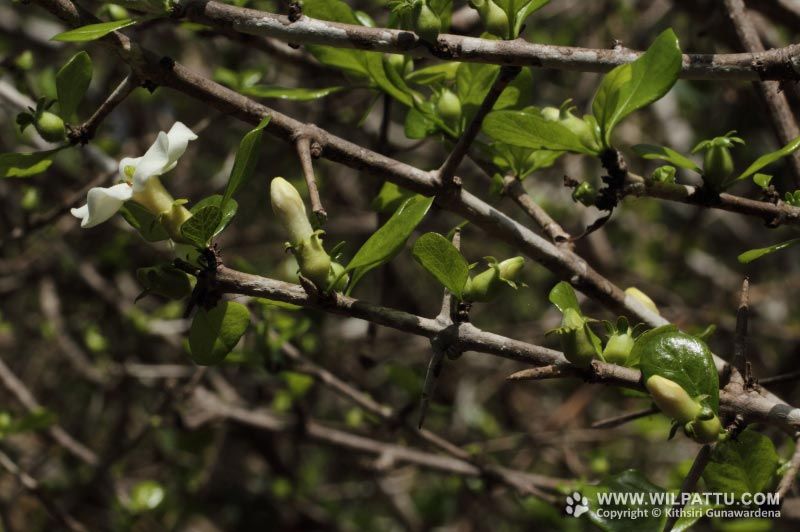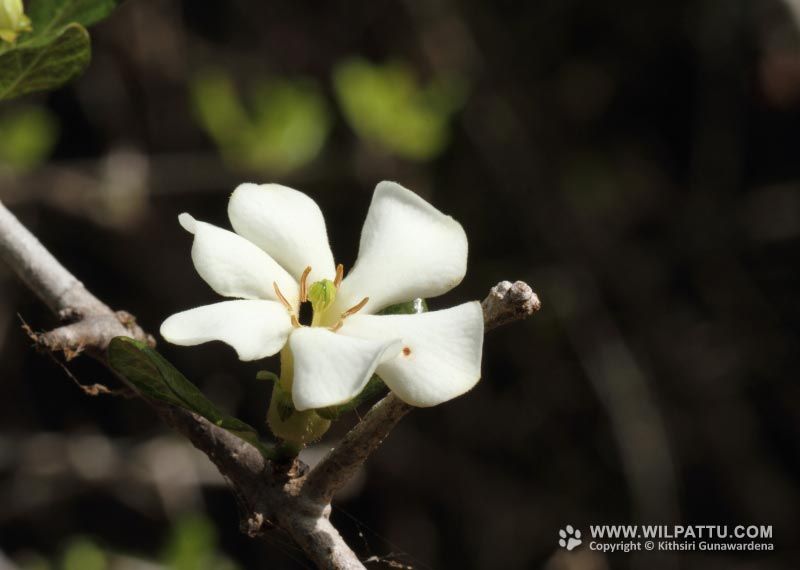
Wild Flowers ‹‹ Go Back
This is a small thorny tree, which is native to tropical Asia, South Africa and tropical Africa. It is a species that is found in the dry low lands of the country. It is very common in forested areas of the coastal dry zone.
The conservation status of this species is regarded as Least Concerned.
(National List 2012).
The fruits are used in Ayurveda medicine to induce vomiting in patients thus giving it the bane emetic’. Research conducted to find out the veracity of the claims made by traditional medical doctors have conformed that the stem bark of the tree possesses significant sedative properties.
Members of the Vedda community use the unripe fruits of this species to poison fish. The fruit is scrapped to produce latex, which is poisonous to fish.
I have seen this species in most dry zone national parks an observed a unique relationship that exists between this tree and two species of butterflies known as the Large Guava Blue and the Common Guava Blue. The females of this species lay its eggs on the calyx of the flower of a young fruits of this species. The tiny caterpillar, upon emerging from the egg, will immediately bore a hole in to the soft pulp of the fruit. It will continue to feed on the seeds and the inside parts of the fruit. As this would result in the fruit to fall off the tree the caterpillars would creep out of the fruit at night and spin silk produced by them tying the stem of the fruit to the branch. This is done each night to ensure that the life giving fruit is intact to the tree. After a few days the caterpillar will form it self in to a chrysalis and will get attached to the top of the dying fruit from inside. It will remain inside until the metamorphosis in complete in the safety of the protective casing. The butterfly that emerges from the chrysalis will quickly creep out of the hole made by the caterpillar before its wings open, as it would otherwise trap the insect inside the fruit. As to how this tiny insects with their pinhead sized brains figured out this process to ensure their survival is one of the most remarkable observation I have experienced in nature. Interestingly these butterflies have a similar relationship with the Wood Apple as well. The dried fruits observed by people under these trees with the inside empty and refereed to as those swallowed by elephants are in fact fruits used by these butterflies.
In Wilpattu I have observed flowers of this species during August to October.








